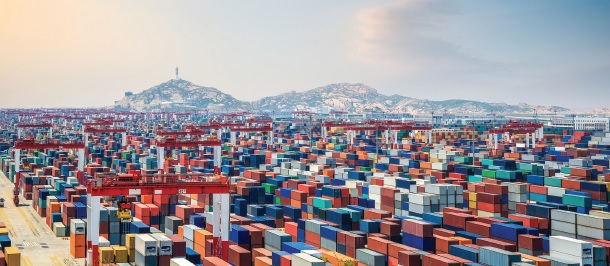With ultra-low container rates, multiple operators teetering on the brink of bankruptcy, and adversarial relationships developing between those shipping goods and the carriers, Xeneta believes the entire container industry must evolve.

The Oslo-based benchmarking and market intelligence platform for containerized ocean freight is proposing a radical solution it says would benefit both shippers and carriers – the introduction of ‘commodity’ status.
Container rates have collapsed over the course of the last eighteen months. According to Xeneta, which tracks data across 60,000 global trade routes, short-term market average rates for the Shanghai to Rotterdam trade are typical. Here, the market average price for transporting a 40-foot container has fallen by 51% since 1 July 2014, currently standing at USD 1294. Some Qingdao – Rotterdam boxes have been obtained for as little as USD100 during the last year.
This, Xeneta CEO Patrik Berglund says, is unsustainable. “These rates are obviously positive for hard-nosed negotiators wanting to ship freight, but not for the industry, and not for anyone in the long-term,” he states. “Only a handful of carriers managed to make a profit last year and some of the biggest players, like HMM and Hanjin, are close to bankruptcy, while UASC lost a reported USD 500 million in 2015.”
“The low rates that are causing this will, naturally enough, skyrocket if the industry loses a few significant players, or sees widespread consolidation of power into fewer hands. This will hit not only shippers hard, but also consumers, as all those Asian-sourced retail and wholesale items on which the western world, Africa, and Latin America relies will become significantly more expensive. So, regaining a sense of stability wouldn’t just be a good thing for the containership vessel operators, but for all stakeholders, right through the entire chain.”
Berglund, and the team working on the Xeneta platform, see the commoditisation of containerized freight as a solution. Commodities are traded on highly regulated exchanges with transparent pricing. Importantly, traded items can be hedged, buying or selling forward to manage exposure to risk. For example, in the case of aluminium, traded on the London Metal Exchange (LME), it is possible to buy or sell forwards by up to 123 months.
“At the moment shippers and carriers are at loggerheads, fighting to get the best prices in an unstable market,” Berglund explains. “However, by trading the transport as a commodity, at a transparent price, both parties achieve security and get the option of buying or selling forward when they feel the price is favourable to their interests."
“For example, imagine how healthy a carrier would be if they’d sold forward three, five or seven years when China-Europe rates were in the USD 1,500-2,000 range. On the other hand, imagine a shipper who bought freight contracts now for two, three or five years ahead, protecting themselves against future rate hikes when carriers go bankrupt, or when the Chinese economy recovers even by just 1 or 2%.”
He concedes that there are risks involved, however, explaining that, for example, shippers who locked in the aforementioned rates of USD 1,500 – 2,000 two years ago would be hurting now. “But that element of risk is the price to pay for both parties to gain predictability and transparency,” said Berglund. “There are many things to consider, but with the transparent data that is now available it’s easier to make truly informed decisions. It has the power to transform this industry.”
www.xeneta.com
Photo: Xeneta claims commodity status would benefit container carriers and shippers.